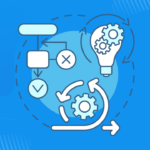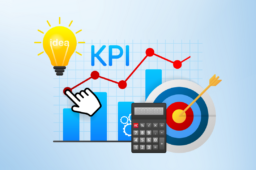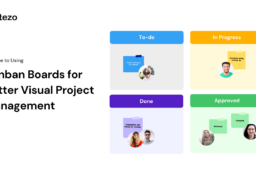
Top Strategies to Boost Your Project ROI This Year
- December 05, 2024
- by
- tehreem
In today’s fast-paced business environment, improving project Return on Investment (ROI) is more challenging than ever. Poor planning, resource mismanagement, and lack of accountability can significantly reduce profitability.
Imagine spending countless hours and resources on a project, only to fall short of expectations. Low ROI isn’t just frustrating—it’s detrimental to growth.
Fortunately, there are proven strategies to help you maximize your project ROI. This guide explores actionable steps, leveraging tools, methodologies, and best practices to ensure your efforts yield the results you deserve.
Understanding Project ROI and Its Importance
What is Project ROI?
Project ROI, or Return on Investment, is a metric that evaluates the profitability of a project by comparing its financial benefits to its costs. For startups and enterprises alike, ROI is a cornerstone of effective project management. It ensures that time, resources, and budgets are optimized for maximum returns.
For example, while an anticipated ROI helps set project goals, tracking actual ROI during and after execution ensures accountability and helps identify potential gaps.
Why Improving ROI Matters This Year
In today’s competitive landscape, businesses face tightened budgets and heightened client expectations. Boosting project ROI not only improves profitability but also enhances operational efficiency and builds stakeholder confidence.
With economic uncertainty looming, companies that prioritize ROI optimization stand a better chance of thriving. Whether through smart resource allocation or leveraging technology, ensuring a robust ROI can create a significant competitive advantage.
Strategies to Boost Your Project ROI
1. Effective Planning and Goal Setting
Success begins with a solid foundation. Planning every aspect of your project and setting SMART goals—Specific, Measurable, Achievable, Relevant, and Time-bound—is vital. A detailed project scope ensures all stakeholders are aligned, minimizing scope creep that often eats into profitability.
2. Optimize Resource Allocation
Efficient resource management can significantly impact your ROI. Use tools like ONtezo or other resource management software to track and allocate resources effectively. Preventing over-allocation reduces waste and ensures your team is neither overwhelmed nor underutilized.
Pro Tip: Regularly evaluate resource performance to identify and address bottlenecks swiftly.
3. Implement Agile Methodologies
Agile methodologies like Scrum and Kanban streamline workflows, enhance communication, and improve adaptability. Unlike traditional methods, Agile breaks projects into smaller, manageable tasks, ensuring faster delivery and reduced wastage.
For instance, daily stand-ups and sprint planning meetings keep everyone focused and aligned, leading to higher project efficiency and ROI.
4. Utilize Technology and Automation
AI-powered project management tools, such as ONtezo, can revolutionize the way you handle projects. These tools automate repetitive tasks, such as report generation, progress tracking, and risk assessments. Automation saves time, minimizes errors, and ensures your team focuses on high-impact activities.
Key Features to Leverage:
- AI-generated user stories: Speed up planning and development.
- Profitability insights: Monitor project and employee performance in real-time.
5. Monitor KPIs and Metrics
Tracking Key Performance Indicators (KPIs) is crucial for ensuring your project stays on track. Focus on metrics like cost variance, earned value, and customer satisfaction to gauge performance and make data-driven decisions.
Frequent reporting ensures small issues don’t escalate into major roadblocks, allowing you to fine-tune strategies as needed.
6. Post-Project Reviews and Continuous Learning
Once your project is complete, conduct a post-mortem analysis to evaluate successes and identify areas for improvement. Document lessons learned and integrate them into future projects to avoid repeating mistakes.
Example: If a previous project faced delays due to unclear communication, implementing regular check-ins in your next project could improve ROI by maintaining alignment.
FAQs (Frequently Asked Questions)
Q1: What are the key factors that influence project ROI?
A: Key factors include effective planning, resource optimization, and technology integration. Monitoring KPIs and mitigating risks also play a significant role.
Q2: What tools are best for tracking project ROI?
A: Tools like ONtezo, Trello, and Monday.com are excellent for tracking profitability, timelines, and resource utilization.
Q3: How does risk management improve ROI?
A: Proactive risk management identifies potential issues early, allowing teams to implement contingency plans and avoid costly disruptions.
Maximizing your project ROI requires a combination of strategic planning, efficient resource utilization, and leveraging technology. By adopting Agile practices, monitoring KPIs, and learning from each project, you can consistently improve outcomes and profitability.
This year, make ROI optimization your top priority. Whether you’re a startup navigating growth or an established enterprise aiming to enhance efficiency, these strategies will set you on the path to success.
Ready to Boost Your ROI?
Start implementing these strategies today, and watch your projects yield greater returns. Have questions or need guidance? Let’s connect!






